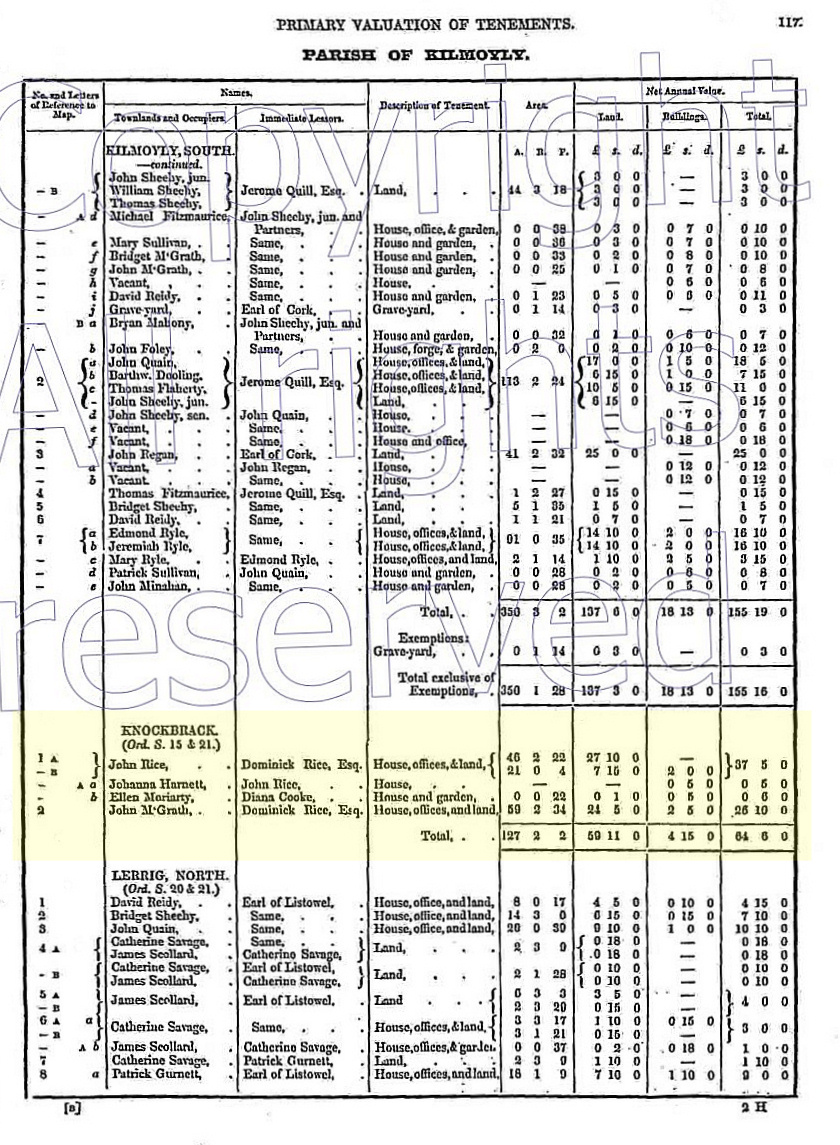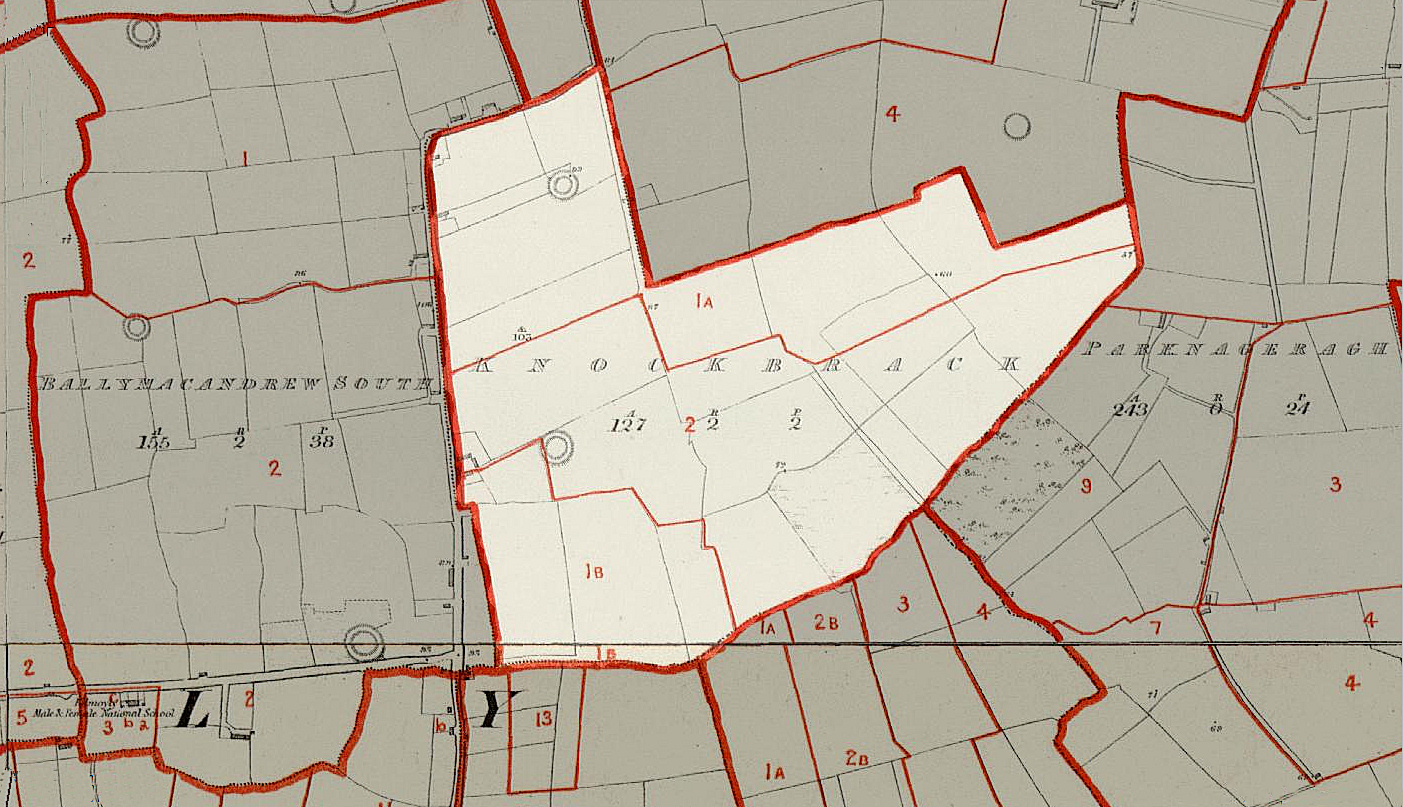

 |
 |
||||||||||
Gene's Griffith's Valuation Breakthrough
First, an explanation of what Griffith's Valuation is:
The pre-1820 system of taxation in Ireland, which included both the Tithe and the "cess" (a county level tax imposed to support civil functions, such as the grand jury, road maintenance, poor, etc) was unpopular among both the landlords and the tenants. The methods for determining taxes varied greatly and was alleged by all to be inequitable. A country-wide system was required to address these issues, and in 1825 Richard Griffith was named to begin the process of defining boundaries for the townlands (information previously only known by local authorities). In conjunction with htis effort, Ordnance Survey teams under the direction of Thomas Colby created detailed maps of Ireland (on a scale of six inches to one statute mile). One additional requirement was the standardization of names for the townlands. John O'Donovan, an Irish scholar was employed to create a "Name Book" of standardized names.
In order to establish a reliable basis for taxing property, a countrywide valuation of property was conducted from 1848 through 1864. This valuation was formally entitled the General Valuation of Rateable Property in Ireland and was carried out by the commissioner of valuation, Richard Griffith.
Today, the printed records of this valuation, almost always known as Griffith's Valuation, are among the most important sources for genealogists researching family histories of the Irish. Referencing more than one million who occupied property in Ireland between 1848 and 1864, the valuation serves as a detailed guide to where in Ireland people lived and what property they possessed, if any.
The use of Griffith's as a source has become more widespread since its publication in microfiche format in 1978 by Irish Microforms, Ltd. and since the publication of a surname index to Griffith's in 1963 by the National Library of Ireland. Griffith's Valuation does not list every person who lived in Ireland in the 1840s-1860s. Rather, it lists only the householder, or that person recognized as the principal owner, renter, or lessee of a house or property.
Frequently referred to as a "census substitute," Griffith's Valuation is a tax list, not a census. The name of the occupier is the person responsible for paying the tax on the tenement (land and buildings). It is, however, the only major surviving list of where people lived just prior to and just after the famine. The Griffith's Valuation was executed to determine the amount of tax each person should pay towards the support of the poor within their poor law union (a division of land). The resulting survey was arranged by barony and civil parish with an index to the townlands appearing in each volume. The original volumes of the survey are held in the National Archives and National Library in Dublin and the Public Record Office in Belfast.
Soon after I started doing genealogy back in the late 80's, I spent a fair amount of time at the NEHGS library in Boston, going through the microfiche copy of Griffith's Valuation, looking for the entry for Knockbrack, in Kilmoyly, Ardfert, County Kerry, Ireland. I never was able to find it. Slowly, over the past few years, a handful of sites - mostly in Ireland - have been digitizing and uploading the records from Griffith's Valuation on-line. I'd check the ones I knew periodically, but none had digitized northern Kerry yet.
Then, it happened! The Ask About Ireland site gave me a hit on McGRATH in Kerry, at Knockbrack! Talk about exciting! Not only did they have the reference page, they had the matching ordnance maps as well!
Talk about exciting! Not only did they have the reference page, they had the matching ordnance maps as well!

Copyright © 1973-2023 by Eugene F. Vogt. All rights reserved. Last modified 02-Jan-2023 1:24 PM ET. Send questions or comments to the Family TreeHouse WebMeister. View our Privacy Policy.